Pernille Ripp's Blog, page 13
March 11, 2020
What Are We Reading Aloud? Survey for K-8 Educators in the United States
I have written before about the read aloud and its power for older students. I have written about how read alouds brings us all together, how they offer us a new language to speak as we build our community. How read alouds allow us to step into a world we might not know or invite others into one that we already live in.
Since founding the Global Read Aloud in 2010, I have been responsible for selecting a read aloud to be shared around the world. The task always feels heavy. The task also brings a lot of joy, but as I have mentioned, the task of selecting the books to be read aloud have also made me curious; what is already being read aloud in the United States? What are the corner texts that, we as communities, keep coming back to year after year? What do our students get to experience from year to year as they travel through our classrooms?
Rather than just be curious, I figured I would ask. So will you help me out by taking this survey and sharing it with others? I tried to make it easy to take but still offer up valuable information. I will share the results once I have enough responses, because once we know more we can learn together.
Enter to Win a Copy of Stamped: Racism, Antiracism, and You by Jason Reynolds and Ibram X. Kendi
A few months ago, I had the incredible honor of reading the newest book from Jason Reynolds a little bit early. It was a true drop everything and read kind of moment. I read it in one sitting, riveted to the pages, marveling at how Jason had managed to take an incredibly complex topic and book, as originally written by Dr. Ibram X. Kendi and present it in such a way that kids and adults alike could truly sink into it. That we could take this book and all of its history and spring into action. Immediately I recommended the book for pre-order to all that I could.

Yesterday was the book’s official release and so to celebrate that it is out in the world, I would like to give a copy away here on the blog. This is not funded by Little Brown, the book’s publisher but by me, because this book needs to be shouted from the roof tops. This is a book that needs to be read, shared, and discussed. So fill in the form to enter. This will be a fast contest, open to the world, I will draw a winner tomorrow night (Thursday, March 12th) and send the book through Amazon or my local independent book store, A Room of One’s Own.
Even if you don’t win, please purchase the book, read it, put it into your curriculum and use the educator guide as created by Dr. Sonja Cherry Paul to deepen the conversations about the racism that continues to smother our world.
March 10, 2020
Reading Action Plans: An Invitation into Further Exploration
This blog has been quiet. Not because life has been by any means but because what we are doing in our time together in the classroom is quiet. It’s not very flashy. It’s not really that new, at least not for us. Every day, the routines we have worked on all year are in place; most students quietly reading during independent reading time, most students finding great books, most students knowing more about themselves as people than they did in the beginning of our journey. Most because not all, not yet any way; some still lament about how they dislike reading, how they do not plan on reading a book over the summer, but many others devour books, seeing their own accomplishments, challenging themselves to grow.
But for those who are not quite there yet, where reading is hard, where reading is not a comfortable activity. For those where reading is something they have spent a lot of time avoiding or simply don’t see the value in yet, at this time of year I add in an extra layer; a reading action plan. A quick invitation into further conversation about their reading life that runs 2 weeks and sometimes more.
I have written about them last year, but the idea is so simple and yet so powerful that I wanted to re-share it. Because all it is is an invitation into conversation every single day for a few minutes about their reading life. No pressure, but instead extra personal support, and an adult meeting them once again where they are at without judgment and helping them along their journey.
The note sheet I use to keep their journeys straight looks like this at the moment, or at least the front does, they change when I don’t see them fitting our purpose. You can see it here. This is not for the students to fill out but for me to take notes, which they can see me take because no one wants another person taking secret notes.
[image error]
I usually use our reading data (which is just how many pages they are approximately reading within a week by signing in with their page numbers as inspired by Penny Kittle) to see who may be great candidates for some extra care. Who are the kids where reading is still a slog, where they are not really making progress or jumping from book to book? I try to keep it to 3 or 4 kids a class at any given time for a few reasons; I want to make sure I am really focused on them and I also want to be able to still meet with another few kids every day. While we typically start on Monday’s, you can start them any day.
I ask them to meet with me during reading time and explain my idea for some extra attention, I don’t want to force it on them but instead discuss what they could gain from it. This is important because too often when students are vulnerable readers we remove all choice from them which leads to further resentment toward their reading lives. If we are going to meet every day, I like their to be a genuine discussion of why and how it may help them. This is instrumental to everything I believe in; keeping a child’s wellbeing in mind before I implement anything. I can’t do that without conversation. If a child doesn’t like the idea, we come up with something else for them, however, this has not happened in my years of doing this.
The first day takes longer because we discuss their current book. Questions I ask are pretty standard:
Which book are they reading?How far are they in it?Why did they choose it?How are they liking it so far?Where will they be in the book in a week?
Then I move down into the notes section, where I ask them about their outside reading life – this is an ongoing conversation throughout the year- and we discuss what their reading plans are for outside of English. My job here is to listen and to ask questions that explain their thinking when it is not clear, not to judge. They also tell me where they think they will be in their book the following day. This is again an important aspect because we so often set the goals for the students and those goals are unrealistic and also have little concern for the reading journey they are actually on. So instead we discuss what is a realistic goal and what the steps are they will take to reach that goal. Some students don’t have any plans to read so we discuss why not and how we can change that. Some have other obstacles in their path and so we discuss those. Whatever is going on, we discuss, and we brainstorm together. Once we have a goal and a plan in place it is time for them to read, so I thank them for their time.
The next day, we meet again, except this time I only ask about how far they got – no judgement – and what their reading life looked like in the past 24 hours. If they read, awesome! If they didn’t, why not? Again, I am not here to make them feel bad but coach and support instead. As we wrap up our quick 3 or so minute conference, they set a goal for the following day and then they are off to read.
And then we repeat that for a week. At the end of the first week, we discuss successes. These range from reading more than normal, to knowing when to abandon a book and picking a different one. From reading at home one night – wahoo – to actually not hating the book. There is no success that is too small to be celebrated, this is important as the goal here is for the kids to learn more about themselves as readers and people, not for me to punish them into reading.
The following week, we continue with our quick check-ins, celebrating successes along the way, and at the end of the week we decide on what the next step should be. There are different options:
Another round of daily check-ins for those that are not quite ready to fly on their own.A gradual release to a three time a week check-in for two weeks.A once a week check-inOr released back into the larger pool, which means a check-in every 3 to 4 weeks depending on what we have going on.
Once again the child and I discuss and decide together. So why bother with this? Beyond the obvious of all kids deserving as much as one-to-one time as possible in our limited time with them, you also uncover so much of what is really going on in their reading lives and what they may need to move further in it. From recognizing that some kids simply forget to bring books home – we have plans in place for that – to not knowing how to fit reading into their lives – we have a plan for that – to still not being able to find books they actually like, having a few minutes every day can get them steered back on course in a way that wouldn’t happen unless you had more time.
While I wish I had time to discuss reading with every child, every day, I don’t, but this takes me one step closer to connecting with all the kids, to helping all the kids. It is not anything flashy. It is not anything brand-new, but it works, much like we know it works. Perhaps the idea can work for others as well?
If you are wondering where I will be in the coming year or would like to have me speak, please see this page.
February 28, 2020
A High Five For All Of Us
I’m on the road again. February seems to have been a long list of travel. Of packing up the suitcase and saying goodbye to those at home, to the kids in my classroom. Sometimes that is the reality of what I do. It is hard, but worth it.
This week has been one filled with the worry that you get when one of your own children are sick. When they are up for hours at night with a fever so high you think your thermometer is broken as you call the doctor in the middle of the night. Sleep deprivation and the end of February is bundle not for the weak.
So I packed a book for my flight tonight, after all, the stack of to-be-reads is overflowing. A new book by my friend, Phil Bildner, that even though it definitely was about baseball and I still don’t understand baseball despite my 21 years in America, looked like it would offer me a world that I could sit in for a while and forget about the now two sick children at home, nestled securely in the care of my husband.
And I read, and then I finished the last page, and then tears came, because this book, A High Five for Glenn Burke, is yet another book we have so desperately needed. That our students so desperately need. They they deserve. That I fear will be ghosted by some educators or school districts because it is about a boy who loves baseball above everything else but is also finding the courage to share what he has known for while; that he is gay and he worries how the world will handle his truth and his heart as he bears it all. And this book is written for our middle grade kids. The kids that so often do not get to see themselves represented in our books because a long time ago someone deemed that anything that has to do with sexual identity or gender is “too mature” for ten-year-olds or younger.
I had tears for the kids who tell me their parents don’t understand. And I worry for the kids who tell me that their libraries don’t carry these books because they go against their “values.” And I get angry at the adults who stand in the way on purpose of these books being placed in the hands of children. Children who so deserve to be seen and heard and loved and protected because the world is already cruel enough.
So I write this post to not just highlight the incredible masterpiece that is Phil Bildner’s new book, but for us, the adults, in the lives of these children to understand just how much it matters for our kids to be seen. How much they hope to be represented in our libraries, in our classrooms, in our curriculum, in our teaching staff. That some kids don’t get to be accepted at home so they hope that school is the place where they will be. That some kids face hatred before they come into our rooms and hope that with us they will be accepted for whoever they are, wherever they are on their journey. And they hope but it doesn’t happen and soon they learn to hide that part of themselves, because it is safer to live half-hidden than be known for all that they are.
So we can say that we value all kids. That our school strives for success for all. That we have high expectations and support for all. But it is a lie when we gatekeep our libraries. When we don’t ban outright but simply never purchase. When we shield ourselves behind doctrines that do not follow one of the biggest doctrines of them all; love others as you love yourself.
Sometimes love comes in the words that we share. Sometimes in the treats. The smiles. The opportunities that we provide after we plan long past our bedtime. But love also comes in the books that we place on our shelves. The ones we talk about. The ones we make a part of our curriculum and ask all of the kids to read, to hear, so that they too can know about each other and so that every child, no matter who they are, will know that with you they are safe because you showed them a book that was about them.
Because your actions will always speak louder than your words.
You should buy, read, and share Phil Bildner’s A High Five for Glenn Burke and many more LGBTQIA+ books, it’s the least we can do.
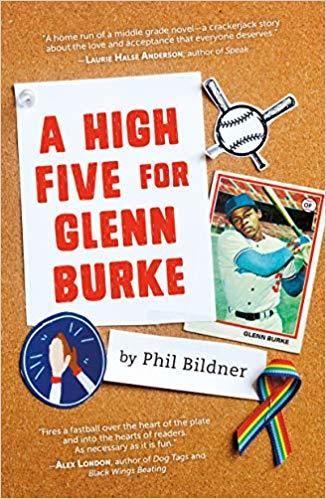
February 21, 2020
Fully Me
I had just turned 18 when I agreed to move to the US. Unaware of what the world would bring, unaware of what else the world could hold. I may have been a mature 18-year-old per regular Danish standards, but I wasn’t quite ready to leave my mother’s side even as my siblings had found homes around the world. The proud teen in me not quite ready to set off on my own rebellion as it was so much easier to fight against the system comfortably nestled within my own zones of safety. For all of my bravado, I was still a child looking to fit in and where else could I best fit in than right with my family, or what was left of it?
I flew across the Atlantic with a suitcase or two, my papers in hand, and muddled dreams that perhaps included going to school at some point but no plan for longevity, no vision for my life beyond this move that would uproot me in the most significant of ways. I was moving, period, but I wasn’t going to stay, surely, my roots where in Denmark after all. In Copenhagen where the university, and an apartment were sure to be in my future.
Perhaps it is the way of the foolish young mind that allows us to jump into situations without seeing the path before us. Of a new home. Of a new identity thrust upon me that I had never embraced before. Of what it would mean to get on that flight, choice already made for the next many years but not realized.
I have now lived in this identity as an inconspicuous immigrant for 21 years.
My Danish language slips through my fingers much like sand, still accumulating but the piles rapidly decrease. I haven’t thought in Danish in many years, nor dreamt in my native tongue. The morning I recognized this, I felt a deep devastation, feeling as if my world tilted as my language was replaced unconsciously. As my brain let go of what has been my voice for so many years.
Sure, I speak English fluently, write it well, and yet within my own home language was everything I held dear to me. I lose words that were once within my grasp. I stick to rudimentary language with my own children as my mother corrects my grammatical inaccuracies. I used to be fluent. I used to speak and write it beautifully. I used to be able to fully say what I wanted to say without the crutches of English to guide me through when the words that used to flow are outside of my grasp. I used to be fully Danish and not an imposter grasping to the things she remembers.
I hold dear to my traditions. To what I believe are my Danish values, but honestly after so many years as an assumed American I don’t know if I get to call myself Danish anymore. If I have been reduced to the shell that so many others use when they trace their proud lineage but are not really seen as from there. From somewhere else. When I am told I look like an American. When I am told I sound like an American. When I am told that I think like an American. When I am told which parts of my identity holds the most weight to others and I wrestle as the biggest part of me, that of Dane, is one that is pushed aside because surely by now I feel more American than anything else.
And nothing could be farther from the truth, but who listens to that?
Because I left my country behind.
Because I left myself at Vestergade 12, 8850 Bjerringbro. In that little red brick house. In the company of my friends. And nothing will ever replace what I once used to be, no matter how many new identities I add to myself.
And I think of how the world views us all as it boils us down to such few elements. At how we treat the kids we teach who are learning English as less than. How we only ask about their traditons but not their mundane. About the daily life that they left behind. About the essence of what made them truly feel like they were the person they were meant to be.
And we boil it down to traditions.
And we boil it down to small phrases.
We boil it down to dishes passed around the table, songs sung on special days.
And we break it down to trips once in a while across the Atlantic so that I can hear my name pronounced correctly and for a few short weeks I can breathe fully again, among the people that I used to call my own.
And we think that is enough. But it will never fully allow us to feel complete as we straddle new cultures, home in neither, but adapting to both.
And so my heart longs to go home. To bring my family with me. To go back to what once was while realizing that it will never be again. But something new could be.
To be fully me again without having to reconcile what I used to be with what I am now.
But until then that dream becomes a possibility, I will continue to to try to define myself as I want the world to see me and give every opportunity for those I teach to do the same. To let them tell me how they want to be seen. To let them tell me what they need. To be fully human as we go on this journey together.
To just be the person we were meant to be and seen for what we would want to be seen as.
February 7, 2020
On Honoring Student Writing Identity
I have been writing. Every Saturday morning, in the quiet before the house comes alive, I sit with a cup of tea, my computer and I write the words that I have been carrying about the work we do in room 203. Sometimes my fingers fly, other times they still as I reread each sentence, not quite sure where I am going but knowing that there is something there.
This isn’t the first time, I have written for a larger purpose. Somehow in my history as an educator, four books have been published under my name, and yet this time, it feels really vulnerable. This time, I am trying to stay in my lane, not overstep, but also write what I know best; the practice of teaching these kids that are put in my care every day. Imposter syndrome is once again a live and well, as well as the notion that perhaps my words are not needed in anyway. After all, does reading identity and the work we do to help every reader see themselves really matter in a world fraught with injustice? So I step away, mired in my own doubts, and don’t return until the following Saturday when I try again.
It makes me think of just how our students feel when we ask them to write. When we ask them to sit down in artificial environments and tell their story. How we cannot dismiss the emotions that are inevitably tied in with the task of writing. Not just all of the skills, but how it makes them feel to pour their words onto a page, not knowing who will receive them, who will carry them? Not knowing how these words will become a part of their labels? Their identity.
I don’t think I have paid enough attention to the emotions of writing for many years as a teacher. It has been a rediscovery, only reentering my reflections in the past few years, to recognize that much like I carry heavy doubts within my own skills, despite being a published author, so do the children I teach. That when they claim they hate writing, it is often more of a statement of the vulnerability they feel and how unsettling it is, rather than the act of writing itself.
So how do we take care of the emotions that are tied with the work that we do? How do we acknowledge, make space, and allow the focus to be on the identity of the writer and not just the writing itself? A few things come to mind.
We center our writing in humanity. Meaning that with every word we pass on to our writers when they hand us their work, we take care in our handling of the words. We pause, reflect, and ask; what would you like me to do rather than jump in with our edits, our no nonsense grammatical and editorial ways and sit for a moment to discuss what they hope to accomplish with the time we have together. Their words lead our work. And if they do not have the words to lead then we teach them.
We give them time to think. For so long, I asked students to jump right in, just start writing, but now we sit in silence. Now we ponder, now we begin with slow starts, and sometimes begin many times, playing around with the words that we want to see through.
We write authentically in front of them. Not aiming for perfection because our writers are already surrounded by perfection through the books we have in our classrooms, but instead show the struggle we also have with putting ideas on the table and forming stories to fall out of our hands. Too often, I rehearsed what I would write because otherwise my modeling would take too long, but it is this length of time that students need to see in order to understand that nothing is wrong with them when they don’t know what to write. Or we write something that is not good, that stinks of repetitive notions and clicheed ideas and we share it and proclaim that not all writing will be great and that’s okay. And we live it.
We fix our own imperfect writing, not using student models as a way to show how to make something better. I know I have asked kids in the past to let us edit their piece live and while the kids willingly gave up their writing, I now think of the weight of the words we wrapped it up in and how that inevitably lead to some kids once again confirming that their writing would only ever be good enough for the “before” version and never the “after.” So write you own imperfect models and use those.
We give them the power to answer who will carry their words? Too often we tell students to share because we assume they want to celebrate and we can only do that publicly and yet we forget that sometimes the only audience needed is ourselves. That sometimes kids take creative risks or their emotions are splayed out on the page and that they need to decide who sees it. That gives power.
We check our own social identities and honor the writing that kids do. Too often, I have erased the child themselves from their writing in my quest for “proper” grammar or spelling without recognizing the voice that a child wrote in. I break rules all the time in my own writing yet never offer up the same privilege to my students. I forget so easily that writing is about uncovering how you want to speak t o the world, so why not practice that in school, rather than always chase after what the dominant culture has decided is proper and real and the only way? Where is the room for experimentation, for diving in to linguistic pathways that model the writers that shake us to the core?
I don’t know if what I am writing will ever be published. At this point, I am at ease with my unsettled state. I write for me, to get the words out of my head, much like I do in this space. I write because if the words are not released then they freeze me up, they distract, they compound. But I am not ready to share them, not yet, and sometimes neither are our students. And that’s ok.
If you are wondering where I will be in the coming year or would like to have me speak, please see this page.
February 2, 2020
Summer 2020 – See Me on the Road or Have Me Speak
As readers of this blog may know, I work full-time as a 7th grade English teacher, which means that most days I am found teaching my incredible 7th graders in Oregon, Wisconsin. It is what my heart loves to do. It is such an honor to work with these kids as they navigate these formative years and to be a part of a community that works so hard in growing together. I have a dream of schools where all stakeholders feel they have a voice; that is my driving force and it is one I share with many other educators.
I am fortunate enough to be invited to share this vision, and practical progress toward it, with many different audiences. Some key areas I have focused on center around creating environments where literacy flourishes, infusing global collaboration using technology, highly engaging student learning experiences, empowering staff and administration, and overall personalization of the student experience. My workshops/sessions are interactive and blend storytelling with practical how-to’s that participants can implement right away. Working with other educators is a thing I love and am honored to be asked to do. I do not take it for granted and I am so grateful for the opportunity to go and work through obstacles with fellow educators. There are so many of us trying to help each other. I never thought teaching other educators would be a part of my world, it is humbling, engaging, and brain-expanding work to say the least.
Even though the snow is piled high outside, I was asked earlier this week where I will be speaking and teaching this summer. Here is where I will be as of right now – will I see you on the road?
June 16th, 2020 – Hazel Green, WI – District Workshop
June 18th, 2020 – Keynote, Scholastic Reading Summit, Indianapolis, IN
July:
July 9th, 2020 – Keynote, Scholastic Reading Summit, Orlando, FL
July 16th, 2020 – Featured Speaker, Harmony Public School District, Houston, Texas
July 24th, 2020 – Featured Speaker, Longwood Summer Literacy Institute, Virginia
August:
August 3rd, 2020 – NerdCampMN, Minneapolis, MN
I am open for a few more dates of work during the summer, or during next school-year. If you wonder about the work I do, here is a sample of what I help others with:
Passionate Learners – How to Engage and Empower Your Students
Would you want to be a student in your own learning environment? In this keynote, based on the book Passionate Learners: How to Engage and Empower Your Students, 7th-grade teacher Pernille Ripp will help both novice and seasoned educators create a positive, interactive learning environment where students drive their own academic achievement by honoring the individual child. Attendees will hear practical strategies for how to build a meaningful relationship with your learners based on mutual trust, respect, and honesty, share ownership of the classroom and school with them, and break out of the vicious cycle of punishment and reward to control student behavior. Based on common-sense strategies, personal storytelling and the research behind student engagement, this is a keynote meant to move you to action. Whether you are just beginning or well on your way in your teaching career, this session is meant to inspire you, help you take some risks, and eagerly pursue your journey toward a school filled with passionate learners.
This session can also be geared specifically toward administrators.
Passionate Readers – The Art of Reaching and Engaging Every Child
With 26% of adults reporting that they have not read a book in the last 12 months, we are facing a mounting reading crisis. So what can we, as the educators who teach this future generation of readers, do to create more engaging reading experiences? In this session, based on the book Passionate Readers: The Art of Reaching and Engaging Every Child, educator Pernille Ripp will help you re-discover the keys of creating a community of readers, no matter the constricts facing your time. Focusing on teacher reading identity, classroom environment and library, as well as a commonsense approach to bolstering student reading identity, this is a session sure to create conditions for more reading joy and deeper engagement with reading. From re-thinking major literacy decisions to all of the small decisions we make daily; this is meant to be a practical session that will offer up ideas to be implemented the very next day.
This session can also be geared specifically toward administrators.
Passionate Writers – Helping Students Become True Writers
While writing continues to be a skill that all children must develop, how do we help students feel like true writers, the type of writers who feel like their work matters beyond the classroom lesson? In this session, we will discuss small tweaks and practical tips on how to help students develop their writer’s voice to see writing as something that matters to them. With this renewed investment, we can help them dig deeper in their writing explorations, to truly become passionate writers no matter their skill level.
This session can also be geared specifically toward administrators.
Using Shared Reading to Increase Reading Joy
Creating opportunities for students to interact with one another through the use of book clubs, short story discussions, read aloud, and other shared reading opportunities is a way to increase engagement, create reading joy, as well as teach important literacy skills. But how do we set up our shared learning opportunities to guarantee access and enjoyment for students and educators alike? Join educator, Pernille Ripp, as she discusses best practices within shared reading, such as literacy circles, read alouds, and discussion, as well as the lessons her students have taught her throughout the years when it comes to developing rich discussions, community investment, and comprehensive understanding of reading.
This session can also be geared specifically toward administrators.
Cultivating and Retaining Passionate Teachers
For administrators and those who work with teachers, this session is focused on ways to help staff feel empowered, engaged, and excited to work with students. From more meaningful staff interactions to building a culture of trust that reverberates within classroom work, this session is meant to inspire, as well as provide practical ways for your school or district to take it to the next level. Based on the book “Empowered Schools, Empowered Students,” this session will offer up ways to cultivate the expertise within your school, create a purposeful environment of trust and collaboration, and implement sustainable ways to tap into student and staff efficacy.
But They Still Hate Reading – Establishing and Cultivating a Personal Reading Identity
The message is clear among literacy communities; we want to help our students become readers for life, we want them to establish a positive relationship with reading, but we need more ideas that focus on the individual development of reading identity. So what do we do when we believe in choice, when we believe in inclusive access, when we believe we have the components needed for each child to be successful, and yet, it does not seem to be enough? What do we do not just on the first day of school but every single day after when those kids who hate reading just grow in their hatred rather than change their minds? Focusing on creating authentic opportunities for students to recognize, (re-)establish, and cultivate positive reading identities this session is meant for the educator looking for practical ideas in their quest to help students become passionate readers. Based on literacy research, personal anecdotes, and advice from her students, this session focuses on practical tools, reflective conversations, as well as easily implementable ideas that will help you continue the work you have started toward a thriving reading community.
This session can also be geared specifically toward administrators.
A Picture Book Taught Me This
While picture books are a staple of the elementary classroom, there often is no place for them with our older students, yet these are the students that need picture books the most. Discover how picture books can help older students read closely, critically analyze text, conquer complex messages, become stronger writers, as well as spark their love of reading again all through the use of carefully selected picture books. Participants will leave with strategies for building their own picture book mentor collection, ideas for lessons, including using picture books as a tool for assessment while honoring each child’s unique reading identity.
Reimagining Literacy Through Global Collaboration
Have you ever wondered what can happen when you integrate technology into your literacy instruction? Pernille Ripp and her students have been reading, writing, and discussing with the world since 2010, fundamentally changing the way she teaches and how her students read and write. Join us as we share ideas for how technology can take your literacy instruction to a new level, including ways to use Skype, Twitter, Edmodo, blogging, and many other tech tools that will allow for global collaboration, cross-curricular projects, and sparking the love of reading and writing in students.
All of these can be adapted to be a keynote, featured session, inservice training or half- or whole-day workshop and are all personalized to fit the unique needs of the educators I am working with.
If you would like to speak to me more about any of the events I will be at or if you would like me to work with educators in your area, please contact me at p@globalreadaloud.com or through the contact form found here
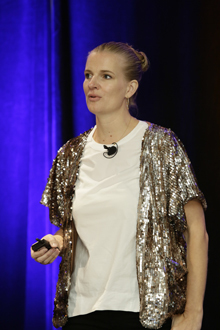 Speaking at ILA
Speaking at ILAI hope to see many passionate educators on the road in the next few months, if our paths cross, please say hello! Until then, take care of yourself.
January 29, 2020
Auditing Your Read Aloud – A Whole School Conversation
In 2010, I created a project called The Global Read Aloud, for the past 11 years I have been the driving force behind this global literacy initiative. For 11 years, I have asked educators to recommend books for us to read aloud on a global scale. To suggest books they feel would make for an incredible connection around the world. That will inspire students to learn more about others. That will inspire students to learn more about themselves. That will generate connections that maybe were not possible before.
You could say that for the past 11 years, I have seemingly had a front row seat to the most recommended read aloud books in America. And I am here to tell you something; they are almost all by White authors featuring White kids.
Probably not a shock to many, but still something to sit with for all.
I used to not notice. That’s what happens when White privileges blinds you to seemingly obvious things. I would gladly go with the suggestions not thinking about skin color or ethnic heritage as the read alouds were selected. Not thinking past the book and into the life off the author, after all, a read aloud is separate from the person who creates it, right? And these books were great. These books would generate conversations. These books had merit. These books had endured and would guarantee a beautiful read aloud experience for all of us. And they did.
And yet, a few years in, someone kindly asked; when will the “Global” part of the name come true? When will you pick a book that isn’t set in America, that isn’t written by a White author? I felt so dumb when the comment came my way. How could I have not noticed? How could I have forgotten to think deeper about what the project recommended?
Now looking back at the years of recommendations, patterns emerge quickly. Despite asking for #OwnVoices authors and stories set outside of the White dominant culture, these books continue to be the most often recommended. The same authors keep popping up. The same titles even. Even when they have been chosen in previous years, I am told that they would make for a great read aloud again because surely nothing can beat the experience we already had. Even if the books have been deemed problematic, they are still recommended.
This is not a trend limited to the Global Read Aloud. I see it play out on social media all of the time. Someone asks for a recommendation for a read aloud and in that list are the same White books. The same books that we, White educators, have loved for years and years and continue to read aloud because to us they mean something more. The same authors but with new titles. The same situations. The similar story of yet another White child overcoming obstacles. And of course, we need these stories too, however, we do not need them as much as we are using them right now. With a teaching profession in America that is dominated by 80% White people, it shouldn’t be a surprise, and yet, it should be something that we, as a profession, recognize and see the harm in.
Dr. Rudine Sims Bishop, of course, reminded and continues to remind us of the power of seeing yourself in books. We Need Diverse Books started from yet another moment of exclusion in a White dominated conference field. The CCBC continues to remind us how White children’s books are. Lee and Low reminds of how White the publishing industry is. But that doesn’t mean our read alouds need to be. In fact, quite the opposite. This is the once again urgent reminder to all of us, White educators, and those who choose the books that we hold up and venerate enough to make a part of our curriculum, of our experience, that we need to audit our read alouds.
That we need to look past the books we have loved for a long time and see what else is out there.
That we need to start recommending #OwnVoices books. Books written by people who are marginalized within our society.
That we need to expand our loyalties. Our lists should contain numerous names of BIPOC authors who are writing incredible stories.
That we need to start reading more widely ourselves in order to discover the new authors who are creating stories that we so desperately need in the hands of our children.
That we need to stay current.
That we need to audit across grade-levels so that we can see what the read alouds are from one year to the next and disrupt the pattern of White dominance that inevitably occurs within most schools because an audit is not done.
That we look around and ask ourselves; what is the story told of kids of color? What is the story told of White kids? And how often is the story told? How does my read aloud cement or disrupt the dominant culture and how we view others?
Whose story is highlighted? Whose story becomes a part of the community we weave together? Whose stories hold power for all of us?
We need to think of the patterns we continue to perpetuate when we fail to see how much power a read aloud holds. Especially if we teach in White majority schools or in schools with White majority teaching staff. Our kids deserve stories about kids whose lives may not mirror their own, but who are still living incredible lives.
Because that’s what a great read aloud does; it creates connections, it leads to revelations, it it binds us together in deeper sense because we have lived through the story of another.
So we need to keep asking; whose stories are we living through? And how does that impact the students we teach? Because it is, and it does, and it is up to us to do something about it.
PS: I would be remiss to not thank those who have pushed my thinking on this. I am so grateful for the work done by the #DiversityJedi #DisruptTexts Chad Everett, Sara Ahmed, #WeNeedDiverseBooks, Dr. Ebony Elizabeth Thomas, and countless others
If you are wondering where I will be in the coming year or would like to have me speak, please see this page.
January 19, 2020
A Few Favorite Books from Our Classroom for Teens Who Say They Can’t Find a Great Book
One of the many benefits there is from being an educator who reads a lot is that I get to create many different reading lists in my head. From the child that asks me to find another book just like the one they just read, to the colleague who needs some books to take their mind off of bigger things, to the child who tells me that they have never liked a single book, there are lists in my head with ideas. These lists grow as I read, study what our kids are reading, and also get to know our readers better.
One of my most used list from my head is for the last group of kids, the kids that come to us saying that all books are boring. That all books they have tried are only okay or not worth their time. Who read a book only because they have to or fake read hoping we won’t notice. Those books are in high demand.
There are a few trends with many of the books that help kids find value in reading again. Many are free-verse or novels in verse, many have mature topics discussed throughout, many are shorter. In fact, I would say that the world needs even more of these books – books with mature, complex storylines that are around 200-250 pages, especially those written by #OwnVoices authors.
So which books make the list at the moment for our readers? Here are a few suggestions…
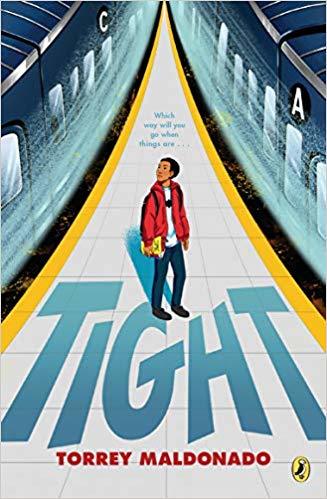
I have loved book talking Torrey Maldonado’s Tight to my students because you can see them get interested quickly once I share the book. After all, how many of my students can relate to the idea of trying to navigate demands from friendships without losing yourself.

I rejoiced loudly at the news that Nic Stone wrote a middle grade novel. Students love both Dear Martin and Jackpot but for some of my students they need a little more accessible language, which Nic so seamlessly delivers in this Clean Getaway, her new middle-grade novel without sacrificing the complexity of the story.
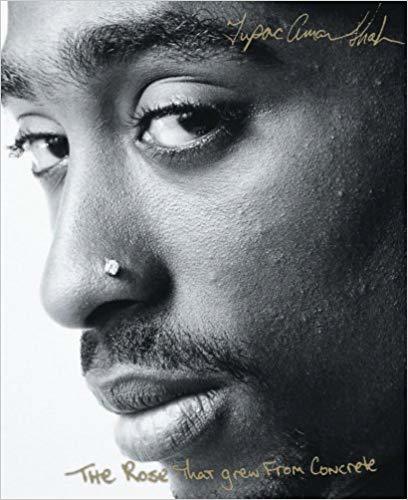
Another book that has been replaced multiple times is The Rose that Grew From Concrete by Tupac Shakur. I love when students discover this book because they so often check with me to see if this is “The Tupac” or some other guy.
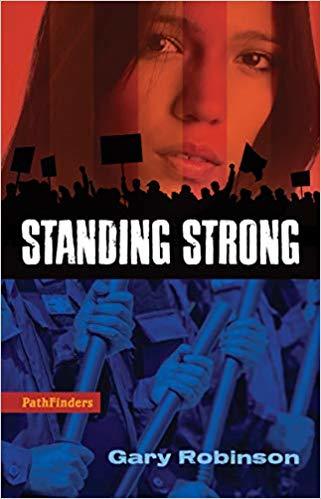
I book talked Standing Strong by Gary Robinson last week and it had an immediate wait list. I can’t wait to see what the students think once they have read it.
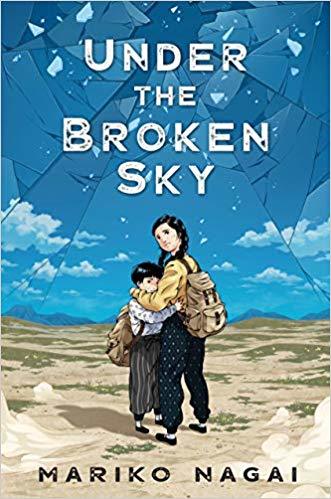
Free-verse continues to reign supreme for many of our students and this new addition Under the Broken Sky by Mariko Nagai has been gaining attention since I book-talked it a month ago.
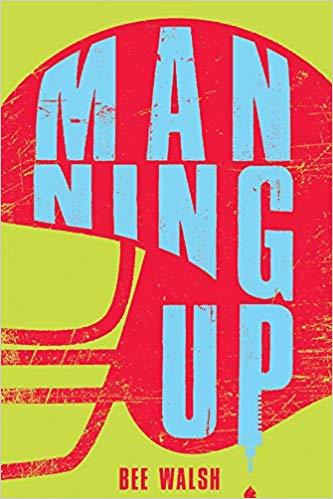
I cannot wait to book talk Manning Up by Bee Walsh this week. It has a few common patterns that seems to do well in our classroom; it’s free verse, it is action packed, it is more mature, and it is about sports.
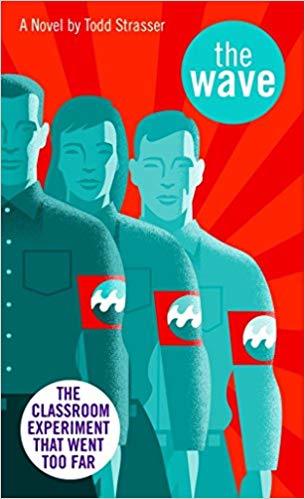
We have continued our discussions about influences, bias, and what causes us to do what we do throughout the year and so I book talked The Wave by Todd Strasser and the book has furiously made the rounds. It’s short, accessible, and a riveting read as we see just how frightfully easy it is to manipulate others.

I have lost of how many kids have read Maybe He Just Likes You by Barbara Dee.
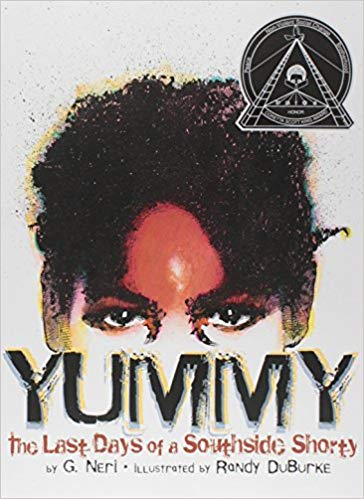
Yummy – The Last Days of a Southside Shorty by G. Neri and illustrated by Randy DuBurke
I have replaced Yummy more times than I can count because it is one of those books where once I book talk, I tend to not see it again. One kid book talked it repeatedly as he tried to convince other us its rightful place in their reading lives.
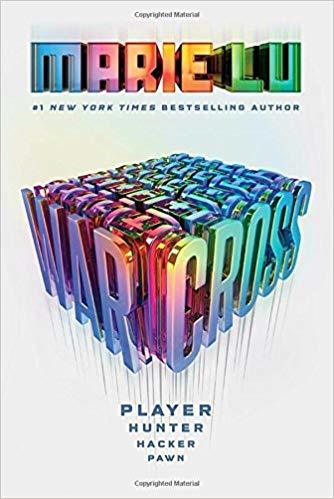
One of our newer additions to must-read books has been Warcross by Marie Lu. This book is featured in our dystopian book club work and is a book that kids love for its fast pace and mystery.
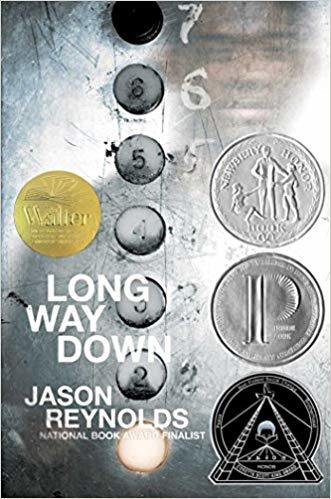
If there is a book that defines our time together it is this masterpiece by Jason Reynolds. Long Way Down continues to be one of our most worn-out, passed around, talked about books more than a year after its release. I have lost count of how many readers have asked for books just like this after they finish its pages.

Scythe by Neal Shusterman is the second most read book series in our classroom, and for the kids who are not quite ready to decode its many pages, the audio version beckons. With its complicated plot lines, incredible world building, and suspense, I am in awe of the talent that is Neal Shusterman and how he never underestimates our readers.

Eleven by Tom Rogers about 9/11 is a book that I book talk on the anniversary of the attacks and I see it passed from child to child. The kids I teach now were born after the attacks and long for books that can help them understand what happens. With its dual narrators, the book is fast paced yet accessible for many.

Until Friday Night by Abbi Glines is one of the more mature books in our classroom, but without fail it is one of the most read series we have. With its focus on football, small town, tragedy, and relationships, it pulls readers in from many walks of life.
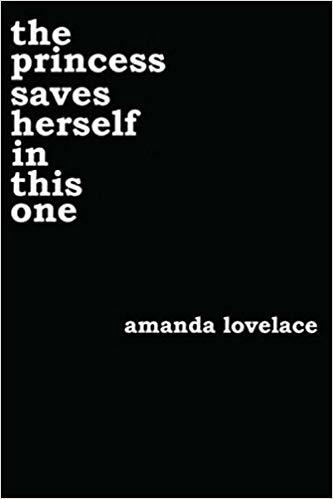
Also more mature, the poetry collection The Princess Saves Herself in this One by Amanda Lovelace is one that especially many of my 7th graders who have not found value in reading gravitate toward. I book talk it individually as well as to the class.
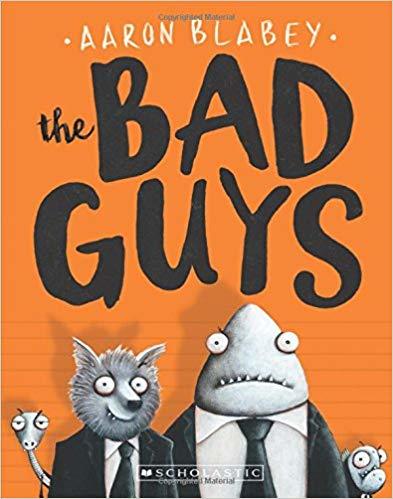
I have seen The Bad Guys series by Aaron Blabey dismissed more times than I can count by adults who deem it too easy for our readers, and yet, this series has single handedly transformed at least three readers’ lives in our classroom over the years. Why someone would dismiss a great series that a child wants to read continues to baffle me.

The Crossover – Graphic Novel Adaptation by Kwame Alexander and Dawud Anyabwile Even if a child has read The Crossover (which is also on this list), they still get so excited to see the graphic novel adaptation.

Handed Cold Day in the Sun by Sara Biren to one of my hockey players and she could not put it down. Her word of mouth recommendation means that it is flying through the classroom, and kids who told me they hate reading are devouring it.
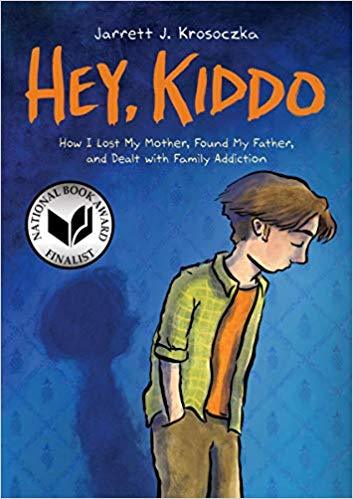
Kids cannot believe that this is a graphic novel. With its unflinching look at how addiction shaped his life and his talents, Hey, Kiddo by Jarret J. Krosoczka is flying through the room.
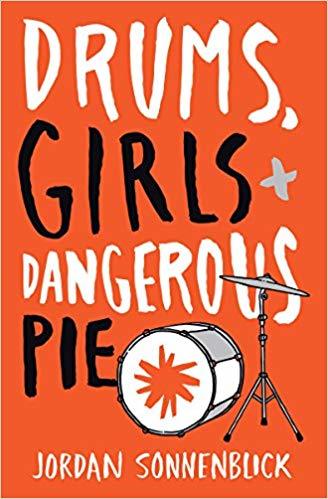
“Mrs. Ripp, I only want to read books like this one…” so said one of my most resistant readers this year, and it happens every year. Jordan Sonnenblick’s Drums, Girls and Dangerous Pies is one of those books I can count on to be a great reading experience for almost every child I hand it to.
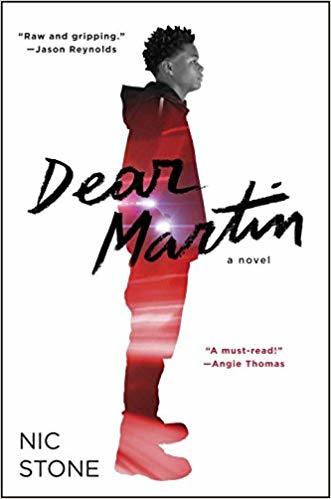
Dear Martin by Nic Stone is one of those books that takes you by the heart and then twists it painfully. Unyielding in its honesty, this book stays with you long after the last page.
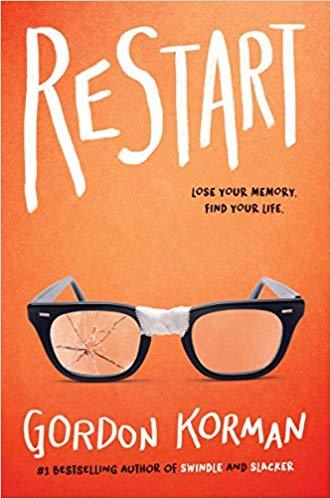
What happens when the alpha bully at a middle school hits his head and forgets everything about himself? I think so many of my students can connect with Gordon Korman’s Restart for many different reasons. It is fast-paced and Chases’ dilemma makes you want to read on; will he go back to how he was?

Also by Jason Reynolds, Miles Morales – Spiderman is the first full-length novel that features the comic book character Miles Morales as Spiderman. Need I say more?

Orbiting Jupiter by Gary D. Schmidt has hands-down been the biggest game changer for a lot of my readers. I have 7 copies circulating and none of them sit on the shelf for more than a day. We have it on Audible as well for students who prefer to listen to their books.
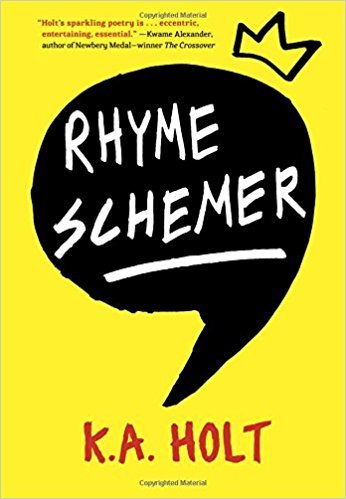
Rhyme Schemer also by K.A. Holt is about a bully who becomes the victim. I love how students relate to this story and often see this passed from kid to kid.

Who would think that our most resistant readers start to fall in love with reading through free verse? What Kwame Alexander’s The Crossover has done for our reading life cannot be underestimated. I have already had to replace my copies of this book this year and students are eagerly awaiting Booked on it’s arrival date of April 5th.

Reality Boy by A.S.King may have a very angry protagonist but I think the anger and “realness” of the books is what draws readers to it. This is another book that is often recommended from student to student.

Another free verse book, this one is House Arrest by K.A. Holt has been making the rounds as well. The discussions in class that this book leads to are powerful for many students.

When a resistant reader recommended this book to me I knew it had staying power in our classroom. Carl Deuker’s Gym Candy is not your typical sports book and I think that is why it has been so popular with many resistant readers. It is a little bit raw and a little bit unresolved, a perfect choice for many of my more picky readers.
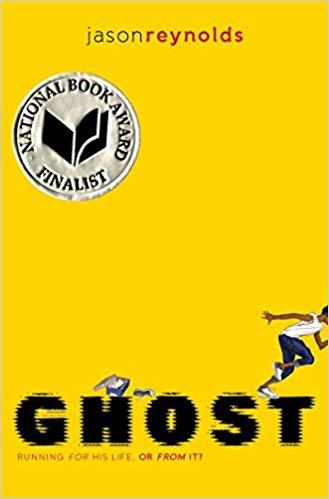
Another Jason Reynolds book, Ghost is book one in the Track series and left my students wanting to read the next book, Patina, right away. Easily accessible langueg with a relatable character who does not have the easiest life, this was a book many kids declared as a favorite.
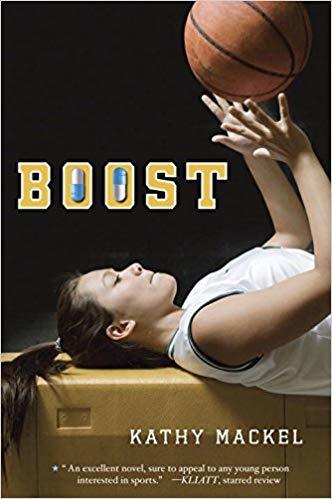
Boost by Kathy Mackel was book talked last week and has not been in my classroom since, quickly passing hands from student to student.
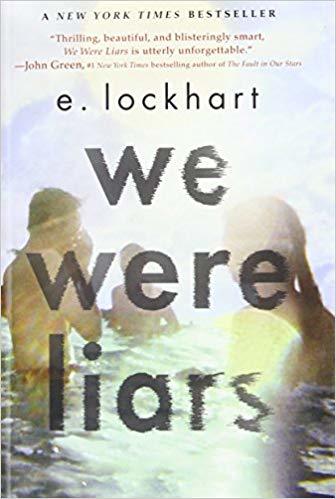
For the first time ever, I used We Were Liars by e.lockhart (Emily Jenkins’ pen name for her YA books) and I was not disappointed. It was clear that my group of readers quickly became absorbed as they begged for just one more minute of reading time.
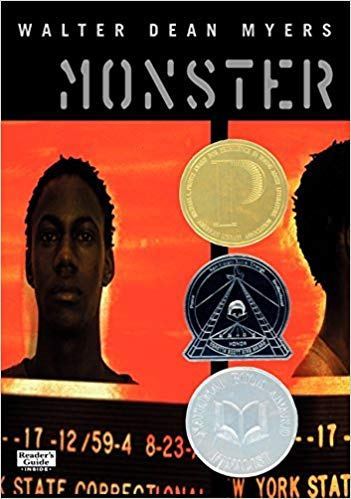
It can come as no surprise that Monster by Walter Dean Meyers is a book many readers gravitate to. I have loved the reflections and thoughtful dialogue that this book creates but even more so how many students have recommended to each other.
What are your must adds/must-reads that you pull out for the kids who say they can’t find a great book?
If you are wondering where I will be in the coming year or would like to have me speak, please see this page.
A Few Favorite Books from Our Classroom for Teens Who Say They Can't Find a Great Book
One of the many benefits there is from being an educator who reads a lot is that I get to create many different reading lists in my head. From the child that asks me to find another book just like the one they just read, to the colleague who needs some books to take their mind off of bigger things, to the child who tells me that they have never liked a single book, there are lists in my head with ideas. These lists grow as I read, study what our kids are reading, and also get to know our readers better.
One of my most used list from my head is for the last group of kids, the kids that come to us saying that all books are boring. That all books they have tried are only okay or not worth their time. Who read a book only because they have to or fake read hoping we won’t notice. Those books are in high demand.
There are a few trends with many of the books that help kids find value in reading again. Many are free-verse or novels in verse, many have mature topics discussed throughout, many are shorter. In fact, I would say that the world needs even more of these books – books with mature, complex storylines that are around 200-250 pages, especially those written by #OwnVoices authors.
So which books make the list at the moment for our readers? Here are a few suggestions…

I have loved book talking Torrey Maldonado’s Tight to my students because you can see them get interested quickly once I share the book. After all, how many of my students can relate to the idea of trying to navigate demands from friendships without losing yourself.

I rejoiced loudly at the news that Nic Stone wrote a middle grade novel. Students love both Dear Martin and Jackpot but for some of my students they need a little more accessible language, which Nic so seamlessly delivers in this Clean Getaway, her new middle-grade novel without sacrificing the complexity of the story.

Another book that has been replaced multiple times is The Rose that Grew From Concrete by Tupac Shakur. I love when students discover this book because they so often check with me to see if this is “The Tupac” or some other guy.

I book talked Standing Strong by Gary Robinson last week and it had an immediate wait list. I can’t wait to see what the students think once they have read it.

Free-verse continues to reign supreme for many of our students and this new addition Under the Broken Sky by Mariko Nagai has been gaining attention since I book-talked it a month ago.

I cannot wait to book talk Manning Up by Bee Walsh this week. It has a few common patterns that seems to do well in our classroom; it’s free verse, it is action packed, it is more mature, and it is about sports.

We have continued our discussions about influences, bias, and what causes us to do what we do throughout the year and so I book talked The Wave by Todd Strasser and the book has furiously made the rounds. It’s short, accessible, and a riveting read as we see just how frightfully easy it is to manipulate others.

I have lost of how many kids have read Maybe He Just Likes You by Barbara Dee.

Yummy – The Last Days of a Southside Shorty by G. Neri and illustrated by Randy DuBurke
I have replaced Yummy more times than I can count because it is one of those books where once I book talk, I tend to not see it again. One kid book talked it repeatedly as he tried to convince other us its rightful place in their reading lives.

One of our newer additions to must-read books has been Warcross by Marie Lu. This book is featured in our dystopian book club work and is a book that kids love for its fast pace and mystery.

If there is a book that defines our time together it is this masterpiece by Jason Reynolds. Long Way Down continues to be one of our most worn-out, passed around, talked about books more than a year after its release. I have lost count of how many readers have asked for books just like this after they finish its pages.

Scythe by Neal Shusterman is the second most read book series in our classroom, and for the kids who are not quite ready to decode its many pages, the audio version beckons. With its complicated plot lines, incredible world building, and suspense, I am in awe of the talent that is Neal Shusterman and how he never underestimates our readers.

Eleven by Tom Rogers about 9/11 is a book that I book talk on the anniversary of the attacks and I see it passed from child to child. The kids I teach now were born after the attacks and long for books that can help them understand what happens. With its dual narrators, the book is fast paced yet accessible for many.

Until Friday Night by Abbi Glines is one of the more mature books in our classroom, but without fail it is one of the most read series we have. With its focus on football, small town, tragedy, and relationships, it pulls readers in from many walks of life.

Also more mature, the poetry collection The Princess Saves Herself in this One by Amanda Lovelace is one that especially many of my 7th graders who have not found value in reading gravitate toward. I book talk it individually as well as to the class.

I have seen The Bad Guys series by Aaron Blabey dismissed more times than I can count by adults who deem it too easy for our readers, and yet, this series has single handedly transformed at least three readers’ lives in our classroom over the years. Why someone would dismiss a great series that a child wants to read continues to baffle me.

The Crossover – Graphic Novel Adaptation by Kwame Alexander and Dawud Anyabwile Even if a child has read The Crossover (which is also on this list), they still get so excited to see the graphic novel adaptation.

Handed Cold Day in the Sun by Sara Biren to one of my hockey players and she could not put it down. Her word of mouth recommendation means that it is flying through the classroom, and kids who told me they hate reading are devouring it.

Kids cannot believe that this is a graphic novel. With its unflinching look at how addiction shaped his life and his talents, Hey, Kiddo by Jarret J. Krosoczka is flying through the room.

“Mrs. Ripp, I only want to read books like this one…” so said one of my most resistant readers this year, and it happens every year. Jordan Sonnenblick’s Drums, Girls and Dangerous Pies is one of those books I can count on to be a great reading experience for almost every child I hand it to.

Dear Martin by Nic Stone is one of those books that takes you by the heart and then twists it painfully. Unyielding in its honesty, this book stays with you long after the last page.

What happens when the alpha bully at a middle school hits his head and forgets everything about himself? I think so many of my students can connect with Gordon Korman’s Restart for many different reasons. It is fast-paced and Chases’ dilemma makes you want to read on; will he go back to how he was?

Also by Jason Reynolds, Miles Morales – Spiderman is the first full-length novel that features the comic book character Miles Morales as Spiderman. Need I say more?

Orbiting Jupiter by Gary D. Schmidt has hands-down been the biggest game changer for a lot of my readers. I have 7 copies circulating and none of them sit on the shelf for more than a day. We have it on Audible as well for students who prefer to listen to their books.

Rhyme Schemer also by K.A. Holt is about a bully who becomes the victim. I love how students relate to this story and often see this passed from kid to kid.

Who would think that our most resistant readers start to fall in love with reading through free verse? What Kwame Alexander’s The Crossover has done for our reading life cannot be underestimated. I have already had to replace my copies of this book this year and students are eagerly awaiting Booked on it’s arrival date of April 5th.

Reality Boy by A.S.King may have a very angry protagonist but I think the anger and “realness” of the books is what draws readers to it. This is another book that is often recommended from student to student.

Another free verse book, this one is House Arrest by K.A. Holt has been making the rounds as well. The discussions in class that this book leads to are powerful for many students.

When a resistant reader recommended this book to me I knew it had staying power in our classroom. Carl Deuker’s Gym Candy is not your typical sports book and I think that is why it has been so popular with many resistant readers. It is a little bit raw and a little bit unresolved, a perfect choice for many of my more picky readers.

Another Jason Reynolds book, Ghost is book one in the Track series and left my students wanting to read the next book, Patina, right away. Easily accessible langueg with a relatable character who does not have the easiest life, this was a book many kids declared as a favorite.

Boost by Kathy Mackel was book talked last week and has not been in my classroom since, quickly passing hands from student to student.

For the first time ever, I used We Were Liars by e.lockhart (Emily Jenkins’ pen name for her YA books) and I was not disappointed. It was clear that my group of readers quickly became absorbed as they begged for just one more minute of reading time.

It can come as no surprise that Monster by Walter Dean Meyers is a book many readers gravitate to. I have loved the reflections and thoughtful dialogue that this book creates but even more so how many students have recommended to each other.
What are your must adds/must-reads that you pull out for the kids who say they can’t find a great book?
If you are wondering where I will be in the coming year or would like to have me speak, please see this page.



